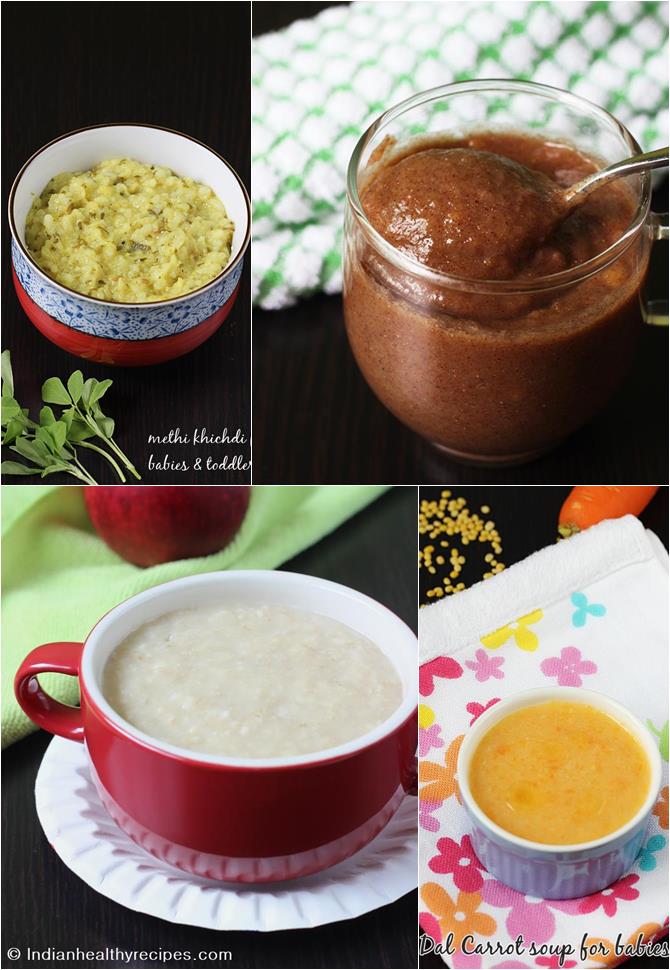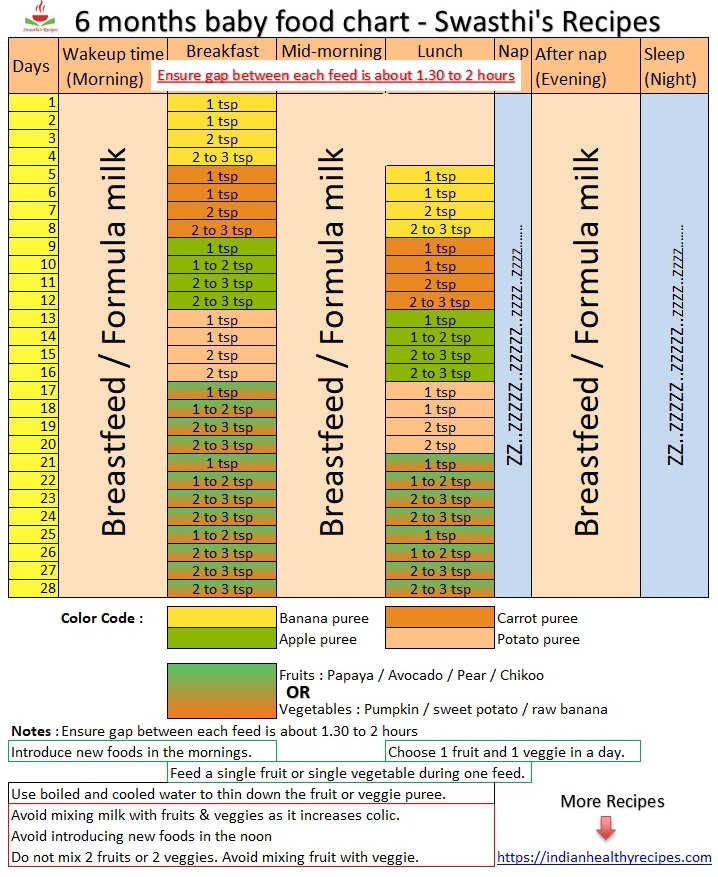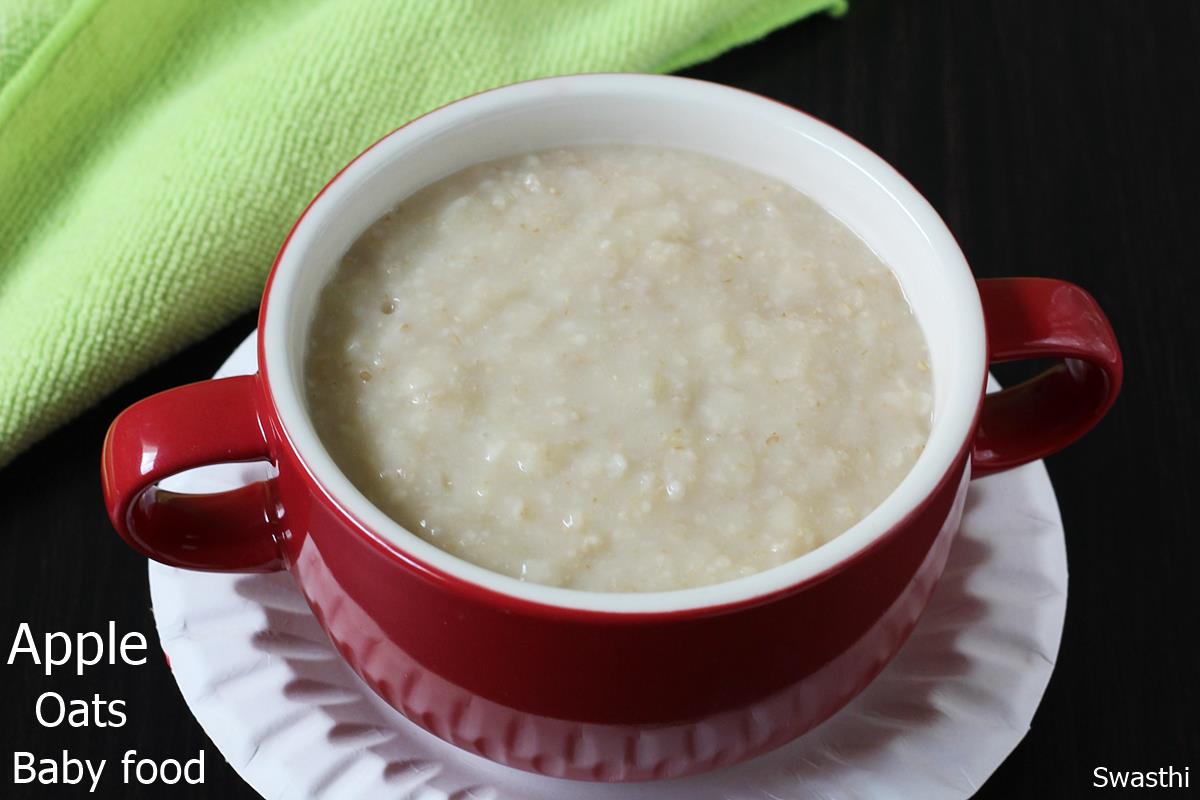A baby develops digestive enzymes in between 4 to 6 months which are crucial for digestion of foods. It is a good choice to wait until the baby develops these enzymes completely. A baby typically begins to develop head control from 3 to 4 months and gains strong head to neck muscles by 6 months. A strong head to neck control helps the baby to accept solids well and can easily swallow. So by 6 months a baby has a better digestive system and a good head control which are needed before the introduction of solids. Breast milk is the best bet for the overall growth of a baby. It is recommended to exclusively breast feed a baby for the first 6 months. As an exception, formula milk is an alternate for women who cannot breast feed baby due to professional, personal or medical reasons. If you have a baby older than 7 months, you can follow this completebaby food chart for 8 months old and above
How do you know your baby is ready for solids?
- The baby’s head & neck are stable. This means baby can accept food and swallow.2. Baby must be able to sit stable with or without support.3. Shows interest in food when others are eating.4. Baby must be able to open the mouth when food is offered.5. Baby is still hungry after breastfeeding or formula feed.
Tips on how to start solids for baby
First consult your pediatrician to confirm if your baby is ready for solids. It is very important to plan well before you introduce any other foods apart from breast milk. Make your own feeding schedule along with the foods you intend you try and get an approval from your pediatrician. Most clinics and hospitals also provide a diet chart or at least a guide. I have made this from the guidelines I got from the Clinics here in Singapore. I have followed the same for both my babies.
- Always start with a single food. Either a fruit, vegetable or grain. Avoid a mixture of foods. You can start with mashed fruit first. The presence of digestive enzymes in fruits helps the baby to digest them better.
- After a week, while you continue feeding fruit, you can start rice water (kanji), after a week clear dal soup or boiled vegetable broth / water.
- Always follow the 3 day wait rule for every food you introduce. Wait for the results until the 4th day. Please see the doctor immediately if your baby develops rashes, runny nose, watery eyes, colic etc.
- Introduce new foods to your baby during breakfast or lunch. Avoid trying new foods during the later time of the day as it is easy to get a control over the problems.
- A 7 month old baby can eat only a tsp of mashed food initially. Slowly by 4 weeks increase the quantity to a tbsp and then more.
Helpful tips – introducing solids for baby
- Use stainless steel or glass bowls and cups for preparation of baby foods. Avoid plastic ware even made of any superior material, including virgin plastic or graded as BPA free. Any kind of plastic ware consists of plasticizers that are used to make the containers flexible. Plasticizers are similar to BPA and are an endocrine disruptor. Even BPA free plastic and virgin plastic ware have chemical plasticizers. Please use google search for more info.
- Always feed the baby in a calm, quite environment and in a steady place like – on the lap, in a high chair or on the floor.
- While feeding, refrain the baby from activities like watching a TV show, playing with a hand held gadget like mobile, and tablet or game devices. Some of these emit radiation that is not good for the baby.
- Meal time has to be a learning for the baby, speaking to your baby about the food – its texture, taste and color helps the baby to develop a liking for the food. Or narrate a good story to the baby, do not encourage the baby to talk while eating. This may seem to be over disciplined but this is the only way i have found to grow fuss free kids. They will begin to love any food that is served.
- Introduce water from a steel cup or a glass not from a feeding bottle or sipper. A 90 ml cup is best suited. This makes the transition from teat to cup easy when the baby grows up.
6 months baby food chart
To follow this baby chart please ensure your baby has completed 6 months and you have an approval from your pediatrician for the same. A baby usually consumes milk every 2 to 3 hours. Solids should be served in between the feeds. Use plain boiled and cooled water to puree the fruits if needed. Avoid mixing milk or any other ingredient with fruit. The combination of fruit and milk products results in indigestion, loss of appetite, no weight gain and accumulation of toxins. Clear soups can be used to make pureed rice, oats or ragi cereal. Feeding only clear soups regularly is not a good idea as they lack the nutrition that is provided by a semi solid food or milk. I have shared a sample baby food chart below which shows the quantities of fruits and vegetables. From the chart (day 13 to day 20), you can replace potato with rice porridge (kanji) or dal soup or ragi porridge. This is an alternate table which you can follow if your baby is in between 6 and 7 months. Baby food recipes for 6 months old along with ingredients and instructions to prepare These are the quantities i followed for my kids i got from the Health Promotion Board,Singapore.Use any one Quantity of fruits for 6 months to 9 months ½ small apple ½ small pear ½ cup sapota ½ cup papaya ½ medium banana How many times can the same fruit be given in a week? Including a variety of fruits will provide different kinds of nutrients to the baby. Banana – 3 to 4 times Apple – daily Chickoo- daily Pear- 3 to 4 times Papaya – 4 to 5 times Avocado- 3 to 4 times or daily Do read the complete post before you attempt any of these recipesMore tips on preparing Lunch from 3 rd week – Rice, ragi or oats. Clear dal soup with veggie. first 7 days (from 3rd week) -Single grain with milk (formula or breast milk). You can also use gluten free or baby oats or ragi to make porridge.next 7 days – Rice with a single veggie or apple. You can use steamed or boiled carrots. VEGETABLES to prefer 1. carrots 2. pumpkin LENTIL/ DAL to prefer 1. moong dal 2. toor dal


